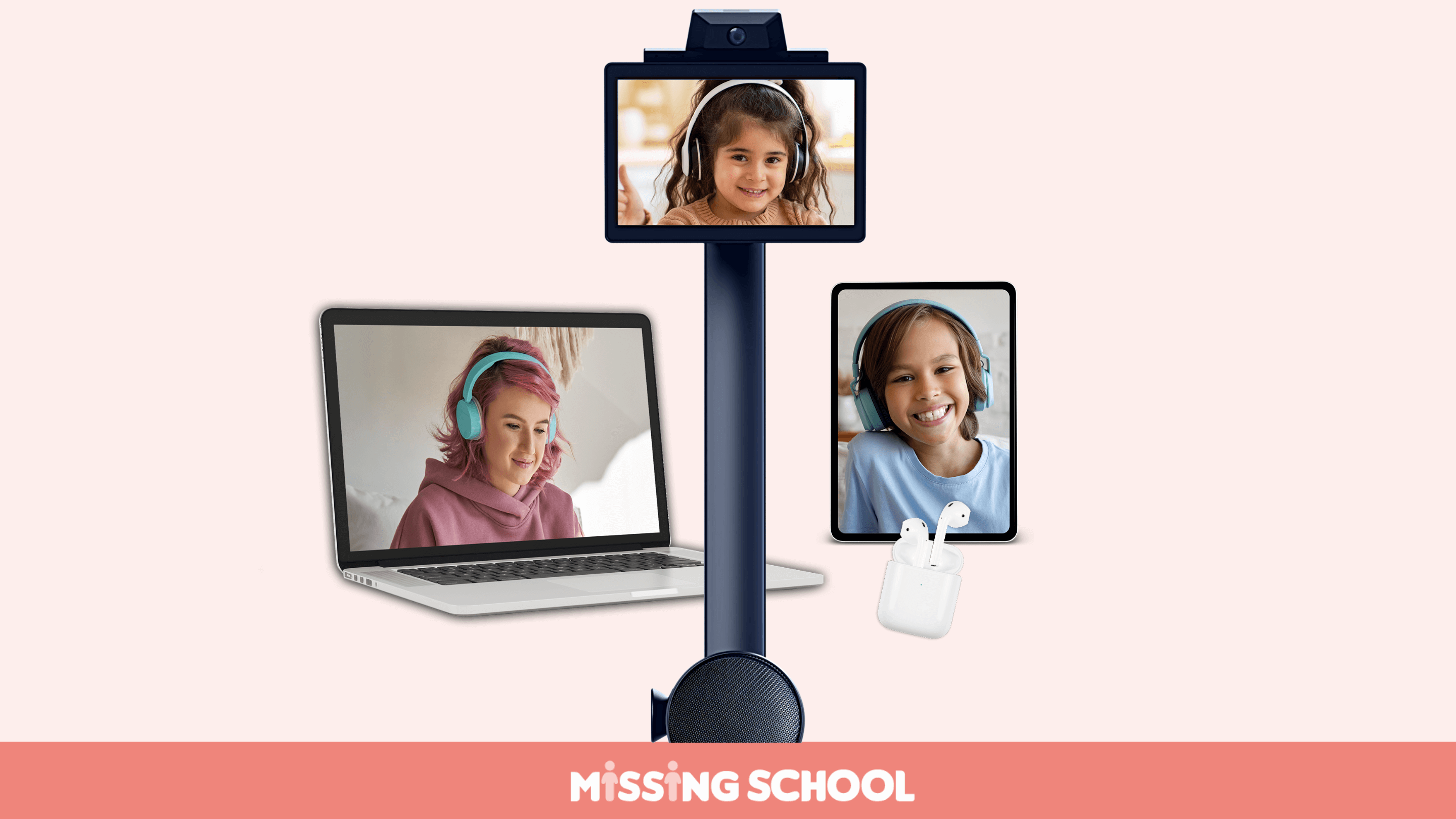Living in today’s world, we’re pretty lucky to have so many tech options at our fingertips. Think about it, just ten years ago, the thought of using robots to help sick kids stay connected to their classrooms was more of a sci-fi dream than anything else. Now, it’s not only possible but it’s also becoming a go-to solution all across the country.
And it doesn’t stop at robots. Even virtual reality is on the table for helping these kids. But let’s not overlook the simpler tools that schools likely have on hand, like Zoom, Teams, or Webex. These are easy-to-use technologies that can be rolled out in no time.
Today, we’re going to dive into these options and give some guidance on how to pick the best combo of technologies for each unique student’s needs.
Telepresence technology includes any device that offers two-way video and audio connection e.g. computer/laptop, iPad/tablet or a telepresence robot.
Telepresence Robots
These cool gadgets let kids who can’t be in school still feel like they’re part of the class. They’ve got two-way video and audio, and the student can even control where the robot goes in the classroom. It’s a neat way for a sick student to “be” in the room with their friends and teachers.
Video Calls
This one’s pretty straightforward: set up a laptop or iPad in the classroom, and the student can join in through video call tools like Google Meet, Microsoft Teams, Webex, or Zoom. Most schools are already familiar with these platforms thanks to the COVID-19 lockdowns.
Learning Management Systems (LMS)
An LMS is basically a digital toolbox for schools. It’s where teachers can store and share all their teaching materials online. Some of these systems even let students turn in their work digitally for their teachers to review. While these platforms focus on learning and might not serve social interaction, they can play a vital role in helping sick kids access their schoolwork.
To connect sick kids to their classroom and give them ongoing access to learning resources, we need a mix of technologies, e.g., pairing a telepresence technology with LMS.
These are all good options, but how do you figure out what’s best? Here’s a handy guide:
1. What Does the Student Need and Want?
Everyone’s different, especially when it comes to learning and staying in touch with friends. Some students might love the idea of using a robot, while others might feel more comfortable with a simple video call or another digital platform. The key here is to talk with the student. Consider their likes and dislikes, personality, and any health issues that might affect their choice.
2. What Can the School and Family Do Together?
Find out what tech is already in the school and how it can help meet the student’s needs. Has the school used robots or other tech like this before? What fits best in the classroom and with the student’s friends? Maybe you need to get the technology from somewhere else? What can be set up quickly and work right away?
3. Give It a Try
Before you decide on a certain technology, let the student test it out. This way, they can see how they like it and if it works for them. Plus, it’ll help you make a smarter decision and make sure the student is comfortable with the tech.
At MissingSchool, we work with families and schools to figure out the best mix of tech to keep students who can’t be in school connected and learning with their classmates. We’ve got tools and support to help you come up with a plan, and we’ll keep in touch regularly to make sure everything’s going smoothly.
Our connection to our community is vital, and it would be impossible for us to stay the course without your incredible support.
There are many ways to help:
- follow along and cheer us on Facebook, Instagram, and LinkedIn
- share this newsletter with your family, friends, or colleagues so we can reach more sick kids, and
- donate towards getting a seriously sick child back into their classroom.
Every action moves us closer to the finish line: a world where every sick child is seen and heard.
Let’s keep connecting.
